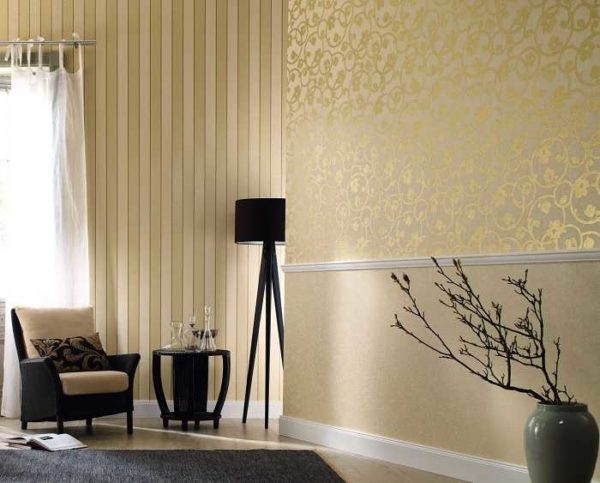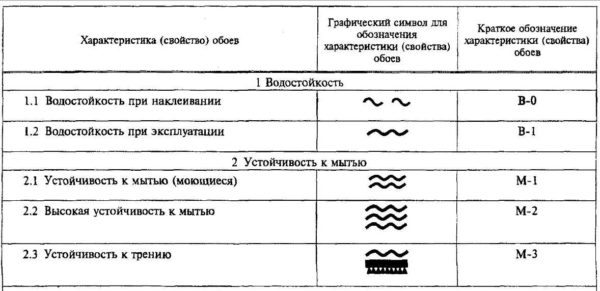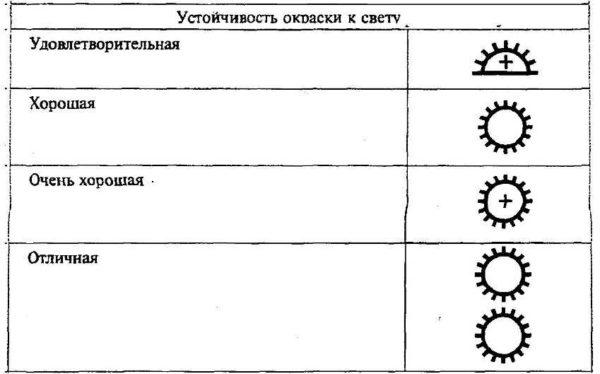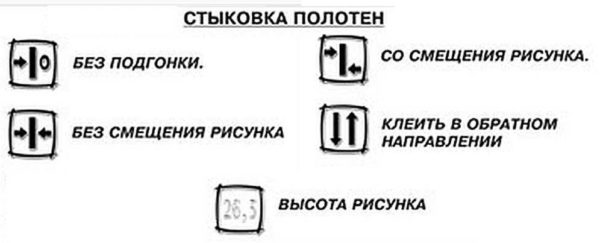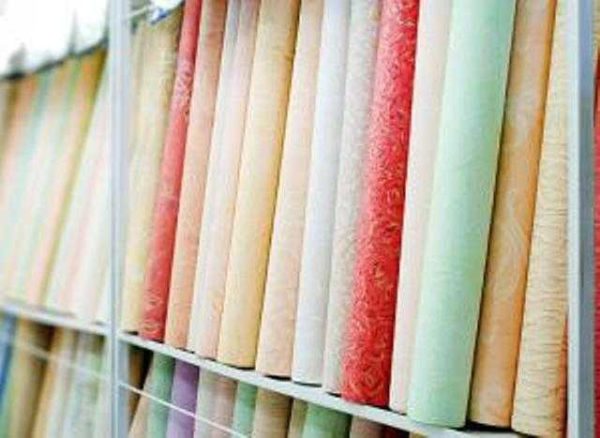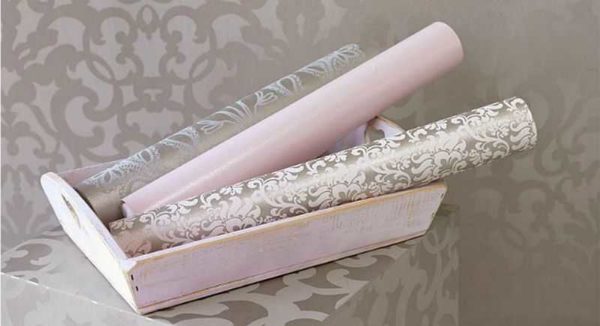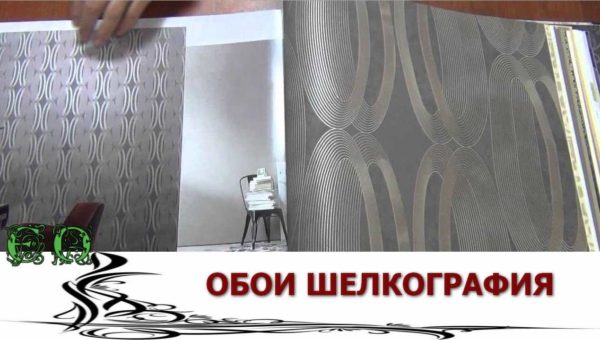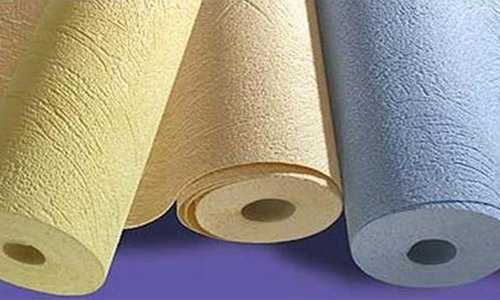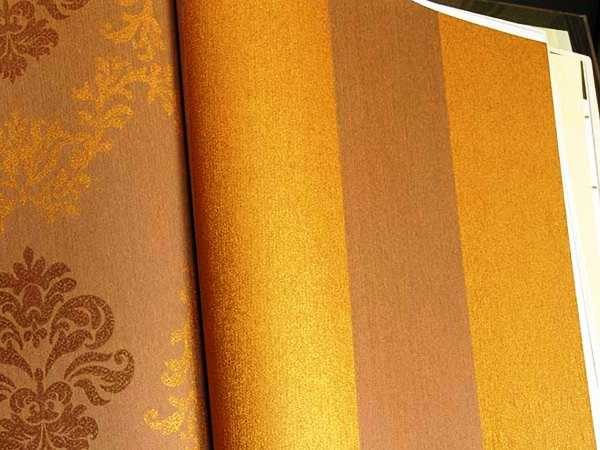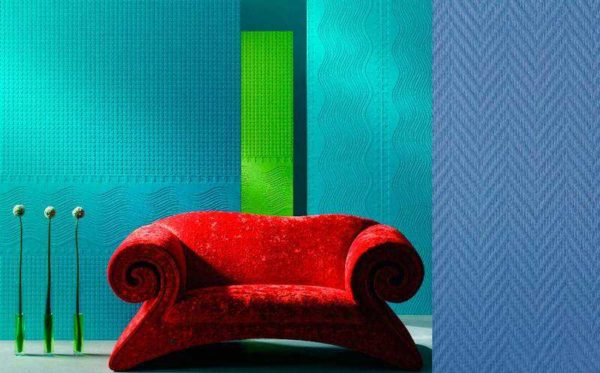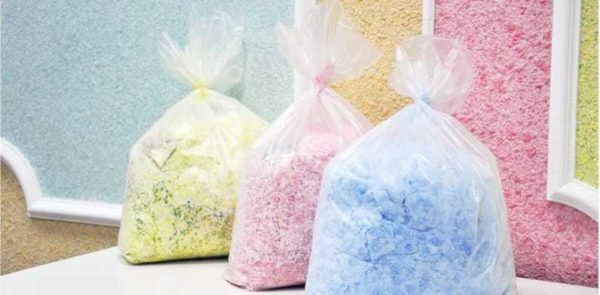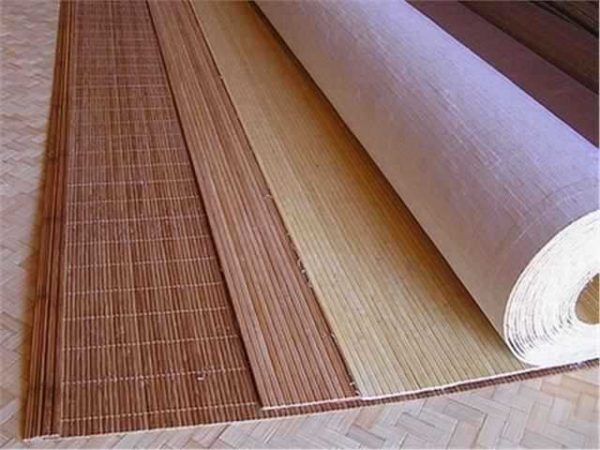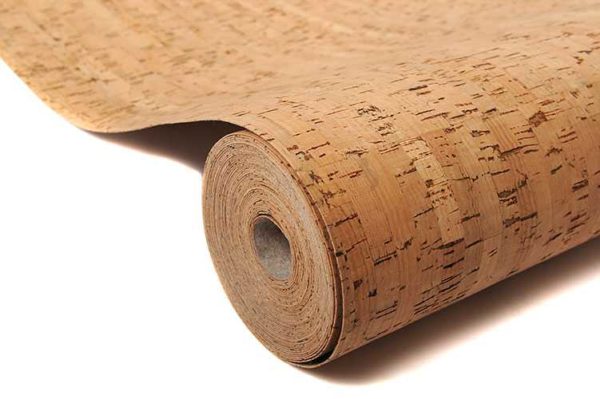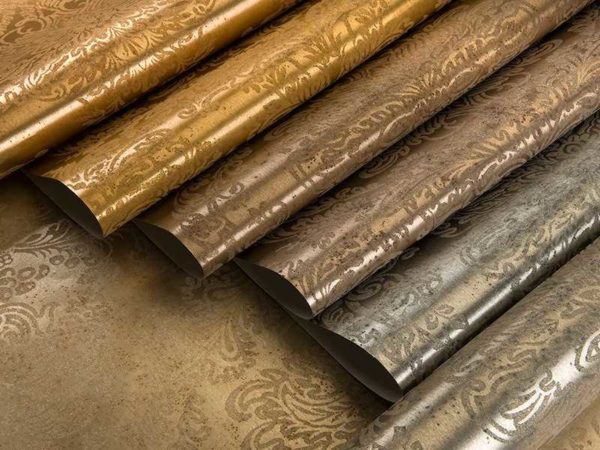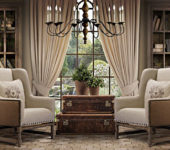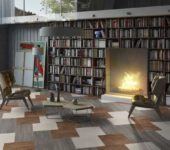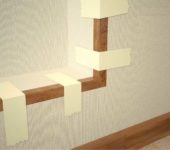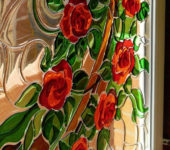What wallpapers are there, where is it better to use them
Wallpapering the walls is the most obvious and widespread decoration method. But this finishing material has different characteristics and prices. What types of wallpaper are, how they differ, where is it better to use - we'll talk about all this further.
The content of the article
Classification by characteristics
In order not to be mistaken when choosing wallpaper, you need to have an idea of what they are generally. Let's start with a general classification according to various features and properties.
The first thing to decide with is how much the finish should be "friendly" with water and how often it will need to be washed. On this basis, they are:
- Conventional, which endure dry cleaning - a vacuum cleaner with a soft brush. In the most dirty areas, you can wipe it lightly with a damp sponge. But no more rude impact - they will break. Basically, this group includes paper wallpapers, as well as some types of acrylic (which are cheaper).
- Waterproof. Cleaning is possible with a cloth and sponge, but without much diligence. It is allowed to use diluted liquid detergents. Such processing is permissible a limited number of times.
- Washable. This type of finish can be maintained using brushes. In particularly dirty places, it is allowed to use non-aggressive liquid detergents.
- Super washable (abrasion resistant). Moisture resistant wallpaper that can be washed with a brush and detergents. These are mainly vinyl of various types and some others - from natural components.
This characteristic is displayed on the label of each roll as a graphic icon - a wavy line (see the photo).
Next, it is worth deciding on the resistance to burnout. It's no secret that some materials and paints change their color on sunlit surfaces. For sunny rooms, it is better to choose a fade-resistant wallpaper. In rooms with windows facing west or north, this is not so critical. For those without windows (corridors, bathrooms, toilets, etc.), this does not matter at all. This characteristic is also displayed on the label with a sun pictogram (pictured below).
Fitting the pattern can also be important. Some colors do not require any pattern selection and offset (monochromatic). Others require displacement, and by different amounts. The offset increases the consumption of finishing material. This information is also indicated on the label using pictograms.
All types of wallpapers are supplied with an insert-instruction on which these data are displayed. There are also images that show how the glue is applied. The method of deletion is also displayed - they are removed in whole or in part. Next, we will consider the types of wallpaper - what they are made of, which ones have advantages, disadvantages, scope.
Paper
Paper wallpapers are the most common and cheapest. Their popularity is due to their low price, wide assortment, good performance properties. They are environmentally friendly, permeable to air, but afraid of high humidity, have low mechanical strength, and quickly fade. Average service life is 3-5 years. Not much, but this and all other disadvantages are offset by a very attractive price.
There are several types of paper wallpapers:
- Single-layer, also called simplex (from the English simple - simple).This is an ordinary paper tape of a certain density, on which a pattern is applied. They must be chosen not only for their appearance, but also for the quality of the paper on which they are printed. It should be tight, not loose. This is the most inexpensive type of wallpaper of all existing ones, but they must be glued carefully - they can tear. Another nuance - all or almost all of the irregularities on the wall will be visible.
- Multilayer. Consisting of two layers are called duplex, three - triplex. This type of paper wallpaper is thicker and may have an embossed pattern. Due to their greater density, they better hide irregularities. For the price it is still inexpensive, but not as much as a simplex.
- With increased detergency (waterproof). This wallpaper is not completely washable, but it is strong enough to withstand wiping with a damp (not wet) cloth. For the price, they are in about the same category as multilayer ones, often used for inexpensive repairs in the kitchen or hallway.
When choosing, pay attention to such an indicator as density - it has a strong effect on strength, but keep in mind that thick paper wallpaper is harder to glue on uneven walls - they are not as elastic as medium ones. Very thin ones are also bad, since, on the contrary, they stretch very strongly, and when wet they can practically creep in the hands or "roll down", go in waves, when trying to level them on the wall. In general, the best option is medium. They will close the irregularities and work with them easily. The division is: up to 110 g / m2 - light, 110-140 g / m2 - medium, more than 140 g / m22 - heavy.
If you are looking for an inexpensive breathable material for your walls, paper wallpapers are virtually unrivaled. When gluing, the simplest glue is used, with which both the wall and the canvas are spread (but not always, read the instructions).
Non-woven
Flizelin is a non-woven fiber that is composed of cellulose fibers (sometimes artificial fibers are used). This material has high vapor permeability, conducts air and moisture well, it comes in different densities. Thin non-woven fabric is a fairly elastic material that can be glued to uneven walls. But it stretches too long, which can be a problem. Medium and high density canvases are easier to stick, but practically do not stretch, so the surface should be flat.
Please note that there are wallpapers made of 100% non-woven fabric, but there is only one based on it. Now we are talking about those that are completely made of non-woven fabric, since otherwise their characteristics depend on the second layer. By the way, when searching in the catalog, write "non-woven wallpaper with non-woven coating", otherwise most of the results are vinyl on a non-woven basis, and they have completely different properties.
Non-woven wallpaper has two forms of release - regular and "for painting", glued with a special glue based on well-purified starch and / or PVA. They can be smooth, textured, embossed or three-dimensional. They have good performance properties:
- When wet, non-woven fabric does not swell from glue or water, does not change its shape after drying.
- The preparation of the walls may not be ideal - due to the density, the material will hide some irregularities, but large depressions-protrusions are unacceptable.
- Can be used in new homes - it does not tear when new small cracks form.
- Slightly reduces the thermal conductivity and sound permeability of walls (it is clearly not enough to significantly improve sound insulation, but read how to improve it here).
Most of the non-woven fabrics are imported, but there are also a few Russian ones (for example, Milassa, Loymina). They do not differ in price, so there is no particular point in choosing by this criterion. When choosing, pay attention to the fact that the width is 53 cm and 105 cm, the length in a roll is from 10 meters to 25 meters. So the price per roll is far from an indicator.Comparison is easier if you count the price per square meter.
Vinyl
Vinyl wallpapers are paper-based or non-woven. A layer of polyvinyl chloride (PVC, PVC or, more simply, vinyl) is applied to the base. This film is less than a millimeter thick, but it gives the finishing material strength (can be washed with a brush), water-repellent properties, high resistance to fading. It is vinyl canvases that can be washed, and many are resistant to abrasion and allow the use of a brush.
This set of properties allows this type of wallpaper to be used in rooms with high humidity, in particular in a kitchen or bathroom, but not in the immediate vicinity of water sources. It also performs well where high strength of the finish is required (corridor, hallway) - you should try to scratch it.
Their main drawback is that they do not allow air to pass through, therefore they try not to use them in living quarters or compensate for them with a good ventilation system.
Types and varieties
Which vinyl wallpaper is better - paper backed or non-woven? It is easier to stick on non-woven fabric, but only on a well-prepared base. The fact is that a thin interlining is used as a base, and since the vinyl film is also thin, the total thickness of the coating is small, they simply cannot hide the irregularities - all errors are visible. One more nuance - if the vinyl wallpaper is chosen light, then the base should also be plain light, otherwise the color heterogeneity may appear through.
If we compare vinyl and other types of wallpaper, then they are the best in terms of strength, they are easily glued to a relatively flat (maybe not ideal) surface. But, with significant irregularities, difficulties may arise - a dry cloth is glued and it is completely inelastic.
The colors of vinyl wallpaper are very diverse. The surface can be smooth, textured. The drawing can be simply applied or it can have volume (embossed wallpaper). There is also paintable.
Separately, it should be said about vinyl wallpaper, which is produced by hot stamping using silk or artificial threads. They are called silk-screen printing for their characteristic shine. They look very "ceremonial", therefore they are often used in living rooms. Some types of silk-screen printing can be seen on the walls in the hallway - they make the room larger with their matte sheen.
Vinyl wallpapers are sold in rolls with a width of 53 cm, 70 cm and 105 cm, the length in a roll is mainly 10 meters (more precisely - 10.05 m), they are glued to special glue, since they have a rather large weight.
How to glue the wallpaper read here.
Acrylic Wallpaper
To be precise, this is acrylic-coated paper wallpaper. The polymer is applied pointwise, without completely covering the base, therefore it happens only with a textured surface. This practically does not affect the number of colors, but on the weight it is quite strong. Acrylic canvases are not as heavy as vinyl, which is why less thick glue is used. Thanks to the spot application of the polymer (it itself is airtight), this type of finish can be classified as breathable, therefore this type of wallpaper is often used in residential premises.
Partial coating of paper with acrylic slightly increases its resistance to washing - they belong to the category of water resistant, resistance to fading is average, as well as the price category. They are glued according to the same principle as paper - both the wallpaper and the wall are spread with glue; the difficulty of gluing is medium. Problems can arise if the acrylic coating is too soft - you press a little harder and it peels off. Then, in operation, they behave the same way - the spraying can be removed by accidentally hitting something hard. Even with a fingernail.This does not apply to all types of acrylic wallpaper, but there are some. In general, not a bad option, but not great.
The width of the rolls of acrylic wallpaper is most often 53 cm, but there are 70 cm, you can also find meter. The standard length is 10 meters. There is a wider range of prices here than those that distinguish other types of wallpaper: there are very inexpensive Russian and Ukrainian production (cost from $ 3-5 per roll), there is imported production - 8-15 times more expensive. It is worth noting that the quality, and the appearance, differs significantly.
Textile (fabric)
Textile wallpaper is made on the basis of paper and non-woven. Woven or braided material made of linen, cotton, viscose, jute, polyester, silk, etc. is glued onto this base. The texture can be smooth, silky, velvety. It depends on the material used and the weaving technique. In addition, relief designs can be woven onto the fabric.
Fabric wallpaper is another type of breathable wall decoration and can therefore be used in living rooms. This is a very beautiful finishing material, but expensive. Even if we compare such not very cheap types of wallpaper like silk-screen printing or natural. At the same time, it is picky about operating conditions - it is afraid of high humidity, it fades, it can only be cleaned dry, occasionally using a damp sponge.
There are two forms of release: standard - rolls 10 meters long (70-80 cm wide). Some textile wallpapers (more expensive) are sold by running meters. Their width is usually 105-120, but there are also wider canvases.
The rules for combining wallpaper are described here.
Glass fiber
Fiberglass wallpaper is a special type of paintable finishing materials. They are good because they are not afraid of moisture, they can be glued in humid rooms. You just need to choose the right paint. The second positive point is that they withstand repeated repainting (the highest quality ones - up to 20 times) and their service life is 20-30 years. Other types of wallpaper in this parameter are much inferior to them.
Due to the interweaving of fiberglass and glass wallpaper, it is vapor -, air and water permeable. However, it is worth remembering that the properties of the glued surface depend on the properties of the paint with which they will be covered.
The disadvantage is not too large assortment, somewhat "office" look, as well as the fact that the smallest particles of glass get into the air before painting. Also, when working, it is worth using protective clothing. Glue fiberglass wallpaper on a special glue that is applied to the wall (read more about pasting walls with glass fiber here).
Liquid wallpaper
A very interesting coating, which is rather one of the subspecies of plaster mixes. Sold in powder or ready-to-use form. Consists of binders (glue), textile fibers, cellulose, mineral and decorative additives. As a putty applied to the walls with a spatula or something similar to this tool.
An important property of liquid wallpaper is that it is undemanding to the base. All other types of wallpaper require a flat surface. Some are smoother, some are less. Liquid wallpaper itself can level the wall to which it is applied. But, in order to save the composition, significant recesses should be pre-sealed with a suitable putty.
Liquid wallpaper is suitable for heated and unheated rooms, but requires normal humidity. Another plus of this type of coating is its high maintainability. The damaged area is cleaned off, the formed recess is filled with the same compound. After drying, the repaired place is almost impossible to find. Therefore, some part of the composition is kept "on demand."
Other types of wallpaper
The above are those finishing materials that are presented in any hardware store.But there are types of wallpaper that are rarely used, but have good operational properties, and they look very unusual. Perhaps that is why they are not so widespread.
- Bamboo. The bamboo cut into strips is glued to a fabric base. The width of the strips is different, the outer or inner surface of the bamboo strip can be used as the front. Roll width - from 90 cm to 250 cm.
- Cork. A thin layer of cork veneer is glued to the paper base. These natural wallpapers do not absorb odors, do not contribute to the growth of bacteria. They are warm and firm to the touch. They are glued with regular wallpaper glue.
- Metallic or metallized. Aluminum foil is glued to the paper base, on which the pattern is applied, everything is covered with a layer of varnish. This type of finish is moisture resistant, it can be washed with any non-aggressive means, but only with soft brushes or rags - the surface is easily scratched.
Now you know all types of wallpapers - both widespread and not so popular. Knowing their main characteristics, you can choose a finishing material for the requirements of a particular room and your desires.

